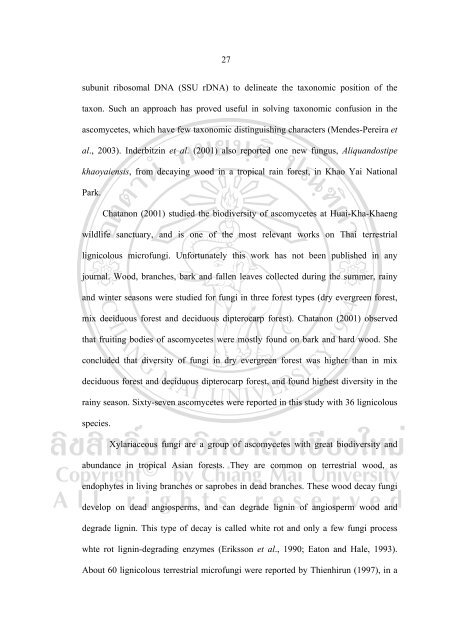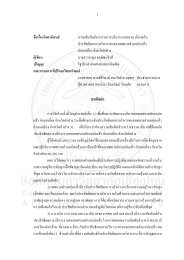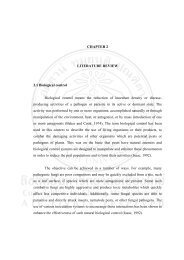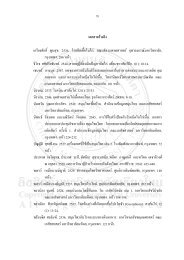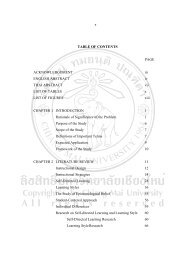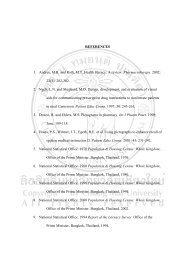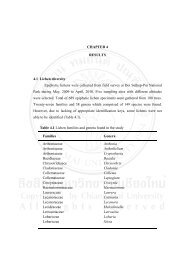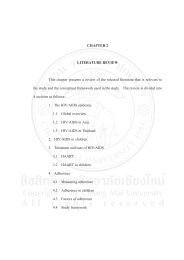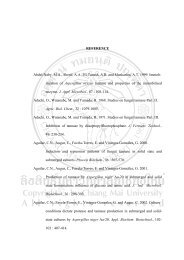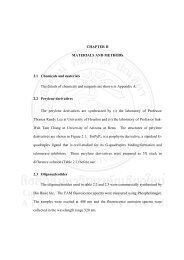Chapter Four
Chapter Four
Chapter Four
Create successful ePaper yourself
Turn your PDF publications into a flip-book with our unique Google optimized e-Paper software.
27<br />
subunit ribosomal DNA (SSU rDNA) to delineate the taxonomic position of the<br />
taxon. Such an approach has proved useful in solving taxonomic confusion in the<br />
ascomycetes, which have few taxonomic distinguishing characters (Mendes-Pereira et<br />
al., 2003). Inderbitzin et al. (2001) also reported one new fungus, Aliquandostipe<br />
khaoyaiensis, from decaying wood in a tropical rain forest, in Khao Yai National<br />
Park.<br />
Chatanon (2001) studied the biodiversity of ascomycetes at Huai-Kha-Khaeng<br />
wildlife sanctuary, and is one of the most relevant works on Thai terrestrial<br />
lignicolous microfungi. Unfortunately this work has not been published in any<br />
journal. Wood, branches, bark and fallen leaves collected during the summer, rainy<br />
and winter seasons were studied for fungi in three forest types (dry evergreen forest,<br />
mix deciduous forest and deciduous dipterocarp forest). Chatanon (2001) observed<br />
that fruiting bodies of ascomycetes were mostly found on bark and hard wood. She<br />
concluded that diversity of fungi in dry evergreen forest was higher than in mix<br />
deciduous forest and deciduous dipterocarp forest, and found highest diversity in the<br />
rainy season. Sixty-seven ascomycetes were reported in this study with 36 lignicolous<br />
species.<br />
Xylariaceous fungi are a group of ascomycetes with great biodiversity and<br />
abundance in tropical Asian forests. They are common on terrestrial wood, as<br />
endophytes in living branches or saprobes in dead branches. These wood decay fungi<br />
develop on dead angiosperms, and can degrade lignin of angiosperm wood and<br />
degrade lignin. This type of decay is called white rot and only a few fungi process<br />
whte rot lignin-degrading enzymes (Eriksson et al., 1990; Eaton and Hale, 1993).<br />
About 60 lignicolous terrestrial microfungi were reported by Thienhirun (1997), in a


